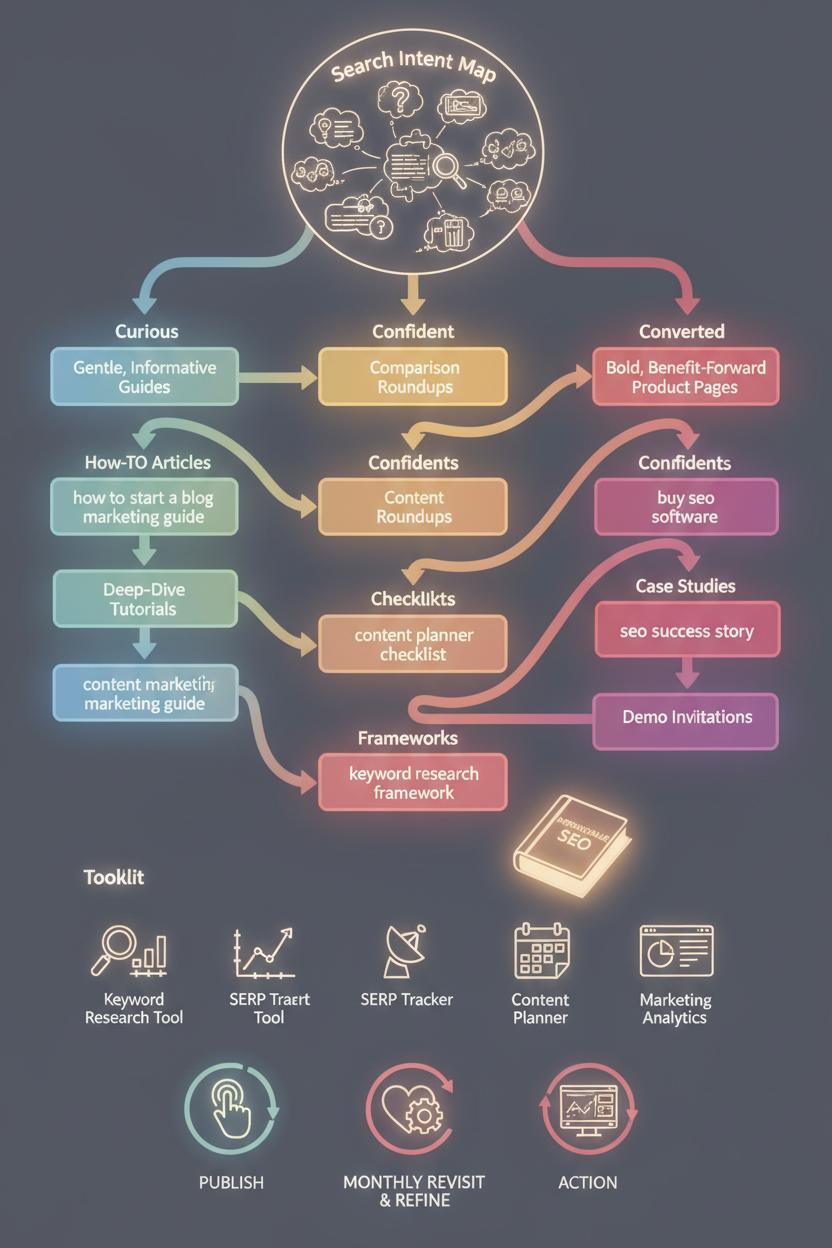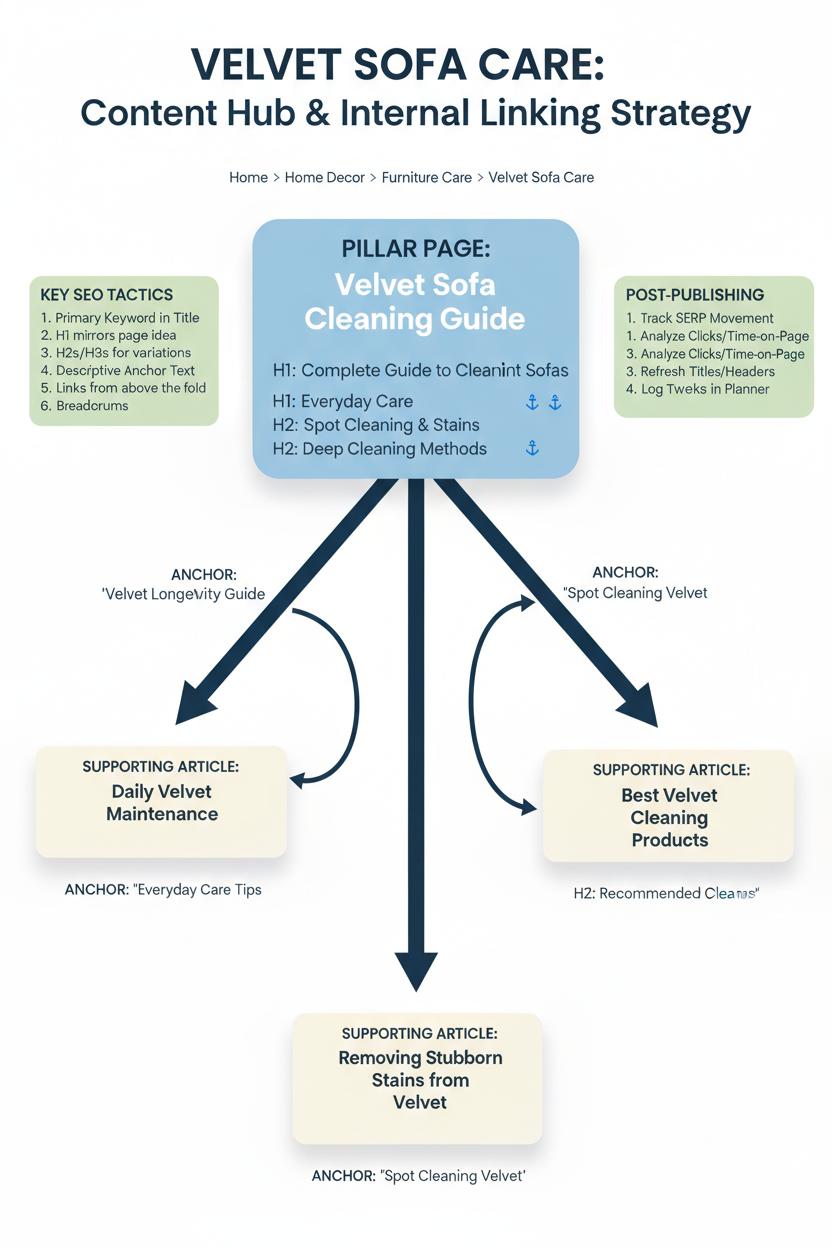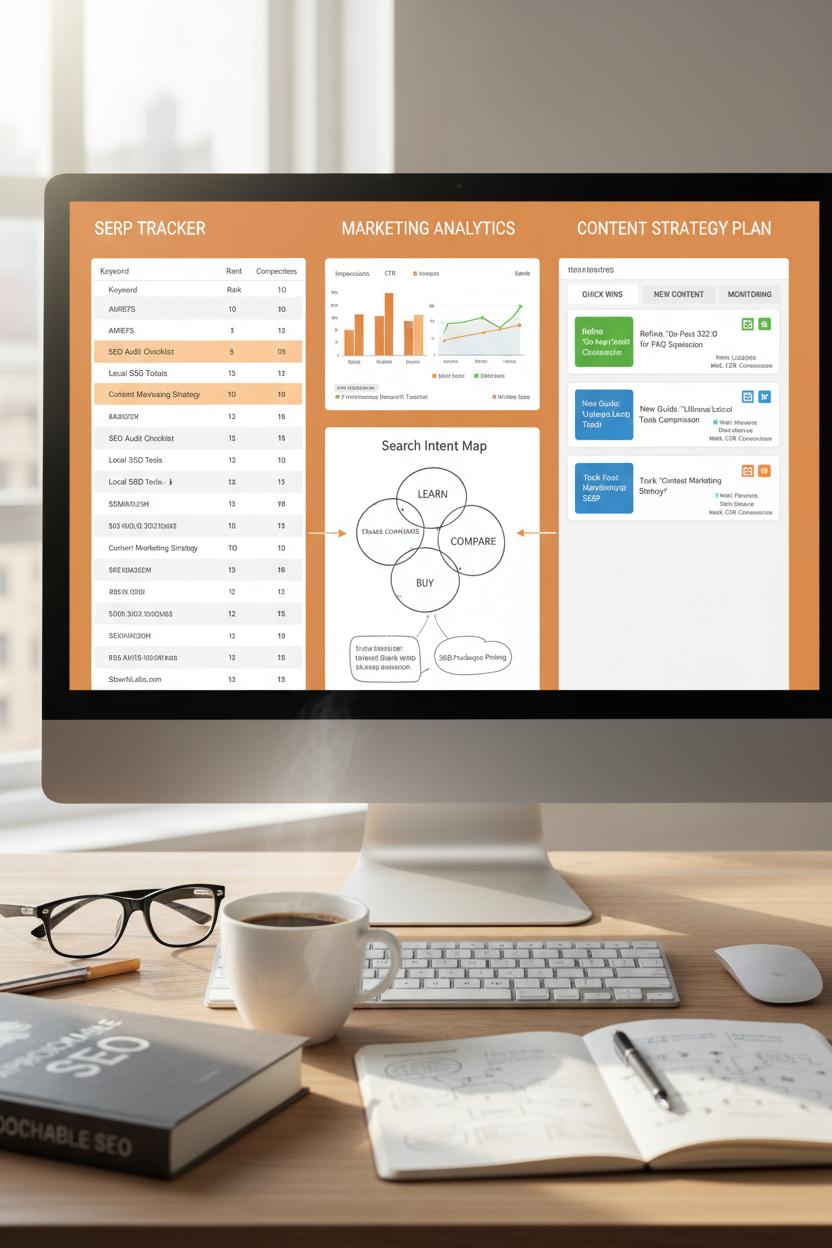Want higher rankings without the guesswork? This visual SEO keywords chart turns keyword research into an easy-to-scan search intent map you can act on today. Learn how to pick topics, cluster queries, and build a content strategy that wins. I’ll share simple ranking tips and the exact steps to track progress with your favorite keyword research tool, SERP tracker, and marketing analytics. Grab your content planner (or that SEO book you’ve been meaning to read) and let’s map, create, and climb—pin now, reference later.
What Is an SEO Keywords Chart and Why It Drives Higher Rankings

Think of an SEO keywords chart as a mood board for your search visibility: a simple, visual way to arrange the words and phrases your audience is actually typing into Google, and to match those terms with the right pages, formats, and timing. Instead of a messy spreadsheet that gets abandoned, it’s a living canvas where you group clusters of related keywords, label them by funnel stage, and sketch a search intent map so each idea points clearly to awareness, consideration, or purchase. When you can see your keyword research laid out like this—color-coded by difficulty and opportunity, sprinkled with notes on seasonality and content angle—you instantly spot gaps, avoid duplicate topics, and plan a content strategy that flows like a beautiful grid.
Why does this kind of visual planning drive higher rankings? Because it keeps you honest about intent and coverage. An SEO keywords chart forces you to pair every cluster with one target page, one primary term, and a handful of supporting terms, so you’re not cannibalizing yourself. It nudges you to diversify formats—how-to posts, comparison guides, checklists, and FAQs—based on the way people search. It also turns guesswork into action: prioritize low-competition long-tails to earn quick wins, then ladder up to competitive head terms. Add ranking tips right onto the chart—title ideas, internal link targets, and refreshing cadence—so execution becomes effortless.
Tools can make it even smoother. Pull data from a favorite keyword research tool to fill in search volume and difficulty, then drop those picks into your chart. Keep an eye on results with a lightweight SERP tracker and fold insights back into the board. If you love reading your way into mastery, an approachable SEO book can sharpen your instincts about intent, while a content planner keeps your publishing schedule aligned with the chart. Round it out with simple marketing analytics to measure click-through rate, engagement, and conversions per cluster. The magic isn’t just the visuals—it’s the clarity. When your ideas live in one organized view, your content ships faster, matches intent better, and climbs the rankings with far less friction.
Turning Keywords into a Search Intent Map

Imagine spreading your keywords out like paint chips on a sunny table and grouping them by the kind of answers people are actually hunting for. That’s the magic of turning a brainstorm into a search intent map. Instead of a messy list, you’ll see clusters: curious, early-stage questions that crave tutorials and explainers; comparison-minded searches that want side-by-sides and reviews; ready-to-buy phrases looking for pricing, specs, and trust signals. When you transfer those clusters into an SEO keywords chart, you get a soothing, visual snapshot of where your content stands and where it’s thin—almost like a color-coded quilt of opportunity that naturally guides your next moves.
Start by doing grounded keyword research with a favorite keyword research tool, then peek at the SERPs with a SERP tracker to see what Google already rewards for each phrase. Note the formats that dominate—how-to posts, checklists, product pages, or buying guides—and let those patterns shape your content strategy. A simple habit: label each term as informational, commercial, or transactional, then match it to a content type you can execute well. Your content planner becomes the bridge here—turn clusters into editorial themes and schedule them in a flow that nudges readers from learning to choosing to converting. If you like deeper dives, an approachable SEO book can help you sharpen the taxonomy, while light-touch marketing analytics tells you which pieces win attention, clicks, and ultimately sales.
As you publish, weave in gentle ranking tips: for informational keywords, go long and helpful with crisp structure; for commercial investigation, place comparison tables and candid pros/cons; for transactional intent, prioritize load speed, trust badges, and clear CTAs. Link these pieces together so a reader never hits a dead end. Then revisit your SEO keywords chart monthly and refresh your search intent map with new queries, seasonal shifts, and performance notes. The result is a living, breathing system—part scrapbook, part dashboard—that keeps your ideas organized, your audience pleasantly guided, and your growth steady without the guesswork.
Tools Stack: Choosing a Keyword Research Tool and SERP Tracker

Think of your tools stack as the cozy workspace behind your SEO keywords chart—the desk lamp, the favorite pen, the tidy set of drawers where nothing gets lost. Start with a dependable keyword research tool that makes discovery feel effortless. Look for clean metrics you can trust (search volume, difficulty, clicks), trends over time, and a generous sprinkling of long-tail suggestions and questions. Filters for country, language, and modifiers help you get precise, while SERP features and People Also Ask insights give you context. Extra credit if the tool lets you cluster terms and tag intent so you can sketch a quick search intent map and export everything right into your content planner. If you’re shopping, you’ll find plenty of options on Amazon—pair a beginner-friendly SEO book with a practical keyword research tool and you’ll be sketching your first chart over coffee in no time.
Next, pick a SERP tracker that’s steady and visual, like a little heartbeat monitor for every page you publish. Daily (or on-demand) tracking by device and location keeps you honest, while callouts for featured snippets, image packs, and local results tell you what’s actually visible on the page. Competitor overlays are great for strategic peeking, and alerts for position swings save you from endless refreshes. Bonus points if your tracker plays nicely with marketing analytics, so you can connect rankings to clicks, conversions, and revenue. That’s where the magic happens: your SERP tracker feeds back into your content strategy, turning raw positions into practical ranking tips—what to expand, which headings to tighten, where internal links might nudge you up a spot.
Here’s the rhythm I love: pull fresh ideas with keyword research, tag intent and cluster them, drop the winners into your SEO keywords chart, then schedule drafts in your content planner and watch movement in your SERP tracker. Over a few weeks, you’ll start seeing patterns—informational posts snagging snippets, commercial pages flourishing with clearer CTAs—and your search intent map will become a living guide for what to write next. Keep it warm, iterative, and visual, and your tools will feel less like software and more like a creative studio for rankings that actually rise.
From Map to Plan: Aligning the Search Intent Map with Content Strategy

You’ve sketched a beautiful search intent map—now let’s turn it into a living plan that moves your audience from curious to confident to converted. Start by pairing the clusters on your map with the real shapes of content your readers love: gentle, informative guides for early questions; comparison roundups and checklists as they edge toward a decision; and bold, benefit-forward product pages when they’re ready to act. Your SEO keywords chart becomes your color palette here, helping you paint each page with the right tones, from broad discovery phrases to tightly focused terms. As you lay it out, weave internal links like soft ribbons between stages, so a how-to naturally leads to a deeper tutorial, then to an offer, then to a case study that seals the deal.
Bring your toolkit close. A trusty keyword research tool helps you validate volumes and difficulty, while a SERP tracker keeps an eye on movements as you publish. If you’re a pen-and-paper soul, a content planner is your best friend for transforming the map into a calendar with due dates, collaborators, and CTAs. Your marketing analytics will whisper what’s resonating—watch time on page, scroll depth, and assisted conversions to see which paths your readers actually take. If you want a deeper dive on frameworks, an approachable SEO book can give you timeless context for why certain topics earn trust faster than others, and how to layer intent without keyword stuffing.
As you hit publish, fold in gentle ranking tips without losing the cozy vibe: align titles with the phrasing from your keyword research, match headers to the questions on your search intent map, and keep introductions warm but clear about the promise of each page. Close loops with irresistible next steps—free templates, mini email courses, or a softly worded demo invitation that fits the moment. Then, revisit your SEO keywords chart monthly, pruning, refreshing, and expanding where you see momentum. The magic isn’t just in mapping; it’s in the rhythm of measuring, learning, and re-styling your content strategy so every piece feels intentional, helpful, and just right for where your reader is standing today.
Visual Templates: Convert Your Chart into a Content Planner

Think of your SEO keywords chart as a mood board for your content calendar: it’s pretty to look at, but it’s also deeply practical once you turn it into templates you can repeat every month. Start by laying your primary topics in big, cozy clusters, then hang the long-tail phrases underneath like tags on a neatly arranged pegboard. Translate each cluster into a weekly theme, and let your search intent map set the tone. Informational intents become tutorials and checklists, comparison intents feel right as side‑by‑side breakdowns, and transactional intents pair beautifully with product roundups or case studies. Add timing, too—seasonal spikes, launches, or promotions—so your calendar echoes what your audience is actually searching for, right when they’re searching for it.
From there, build a visual template that guides every piece from idea to publish. Start with a headline formula that uses one target keyword, a supporting phrase, and a promise of value. Follow with an outline that deliberately answers intent in the first scroll, then expands with examples, visuals, and a gentle nudge to related posts for internal linking. Drop in a standard block for FAQs sourced from your keyword research, and leave space for a quick metrics note so you can revisit what resonated. When you rinse and repeat this framework, your content strategy gets both prettier and more predictable—like a well‑curated board that keeps delivering new inspiration.
If you love tools, this is where a simple content planner and a favorite keyword research tool become your right and left hands, with a SERP tracker and light marketing analytics helping you see what sticks. An approachable SEO book can be a handy desk companion as you refine outlines and on‑page details. As you publish, capture learnings right on the template—time to rank, keywords won, and any comments on intent fit—so your ranking tips evolve from guesses into patterns. Over a few cycles, your chart becomes a living template library: a repeatable system that transforms raw keyword research into confident, visually mapped posts that look good, read better, and quietly climb.
Marketing Analytics: Measure Keyword Performance and Content ROI

Once your SEO keywords chart is looking pretty and your search intent map feels dialed in, it’s time to put on your analyst hat and measure what’s actually moving the needle. Think of marketing analytics as the cozy, candlelit corner where your keyword research turns into real-world results. Start by pairing each keyword cluster with a primary URL in your content strategy, then log baseline data with a SERP tracker and a favorite keyword research tool. Keep a simple content planner next to you—digital or paper—to note publish dates, refreshes, and promotions so you can tie performance to moments in time. If you’re a highlighter person, color-code intent (informational, transactional, local) and track which flavors bring traffic that actually converts.
Build a lightweight dashboard that watches the basics and the bottom line: impressions, clicks, CTR, average position, and conversions for each cluster and page. Layer in secondary signals like dwell time, scroll depth, and internal link assists to see which pieces quietly nudge people toward sign-ups or sales. For content ROI, use a gentle formula: organic revenue or lead value attributed to a page minus creation and update costs over a set window. If you run email or social boosts, tag links so you can separate blended wins from pure search—your marketing analytics should tell a clean story. A quick before-and-after snapshot 30, 60, and 90 days post-publish helps you know when to double down, sunset, or consolidate.
Then comes the glow-up. Use these ranking tips to turn insights into upgrades: rewrite titles to echo search intent, add a punchy intro that answers the query in one breath, and weave in internal links from related pillars. If your search intent map says the query is commercial, add comparison blocks, pricing cues, and clear CTAs; if it’s informational, deepen how-to steps and sprinkle schema. Update images, FAQs, and examples, and refresh stats quarterly. Underperformers can be merged into a single, stronger page that better satisfies the query. Keep a slim SEO book nearby for best practices, and let your tools—keyword research tool, SERP tracker, and content planner—keep you honest. Analytics aren’t numbers for numbers’ sake; they’re the gentle nudge that turns ideas into rankings and scrolls into revenue.
On-Page Execution: Using the SEO Keywords Chart for Titles, Headers, and Internal Links

You’ve sketched your SEO keywords chart—now it’s time to make it sing on the page. Start at the very top with titles: pick the primary phrase from your search intent map and place it up front, then add a human-friendly promise or outcome. Think “Velvet Sofas: Care Guide + Cleaning Steps” rather than a flat string of keywords. For H1s, mirror the page’s big idea; for H2s and H3s, weave in supporting variations and long-tails from your keyword research without sounding robotic. I like to treat headers like a guided tour: each one answers the next logical question a searcher has, which keeps readers scrolling and signals clarity to Google. If you need inspiration, pop open your favorite keyword research tool or flip through an SEO book to spark phrasing that matches intent. Your content planner can then schedule where each cluster lands in your broader content strategy, ensuring you never overuse a term on one page and neglect it on another.
Anchors and internal links are where your chart becomes a map readers can actually follow. Link from descriptive text, not just “click here,” and match the anchor to the query they’re likely to have next. From a “what is” intro, point to your deeper tutorial; from a tutorial, point to a comparison or product page—always aligned to the search intent map. Keep your pillar pages well-linked in H2 sections, and let supporting posts link back up with anchors that echo the exact subtopic from the chart. A few ranking tips I swear by: keep internal links above the fold where natural, repeat the most important anchors in one or two strategic spots (not everywhere), and use breadcrumbs to reinforce topical relationships. After publishing, use a SERP tracker to watch movement and marketing analytics to see which anchors get clicks and time-on-page. When you spot pages that are close to breaking through, refresh titles and headers with sharper, intent-matched variations from your SEO keywords chart, and log those tweaks in your content planner so you can measure lifts over time. This is on-page execution as a gentle rhythm—consistent, intentional, and beautifully mapped to how your audience actually searches.
Competitive Gap Analysis with Your SERP Tracker and Marketing Analytics

Once your SEO keywords chart is sketched out like a pretty mood board for your traffic goals, it’s time to peek over the digital fence and see what competitors are harvesting. Open your SERP tracker and take a fresh snapshot of the top positions for your priority phrases, then layer that view with your marketing analytics so you can spot the gaps where others are winning clicks you’re not even chasing yet. I like to pair this with a simple search intent map—label each keyword by whether people want to learn, compare, or buy—to reveal mismatches between what your audience is craving and what you’re currently publishing. This is where competitive gap analysis feels a little magical: the overlap of rankings, intent, and performance turns into a warm, visual story about opportunity, and it naturally guides your content strategy toward the pages that can move the needle fastest.
Start with a quick sweep in your favorite keyword research tool to surface variants, synonyms, and long-tails your rivals rank for. Pull the top 10 results for each target query from your SERP tracker, then highlight the rows where competitors appear but you don’t. Now hop into marketing analytics to check impressions, CTR, and conversions for adjacent terms you already touch—this hints at which gaps can piggyback on existing authority. As you skim competitor pages, note patterns: do they satisfy the intent more completely, offer clearer structure, or include comparison tables your readers expect? These observations become practical ranking tips you can act on: tighten titles, expand FAQ sections, add product visuals, or weave in expert quotes. Keep your search intent map handy so every optimization supports how the user actually searches.
Turn the findings into a cozy, doable plan. Drop each gap topic into your content planner with a short brief: intent, target subheadings, internal links, and the metrics you’ll watch next. Schedule quick wins first—refreshes to near-ranking posts—then the net-new pieces. Set your SERP tracker to alert you when positions nudge upward, and circle back in a week to check engagement in marketing analytics. If you want extra inspiration, an approachable SEO book can spark new angles for outlines and on-page structure. Over a few cycles, your SEO keywords chart evolves from a list into a living map of momentum, and you’ll feel that confident click when the right content meets the right intent at the right moment.
Case Study and Final Ranking Tips: From Search Intent Map to Published Content

Picture this: a small home decor brand in a cozy studio, coffee steaming, mood board glowing, and a color-coded SEO keywords chart open on the laptop. Their goal was simple—own the conversation around “gallery wall ideas” and “living room wall art.” We started by turning a messy list of phrases from a keyword research tool into a clean search intent map, lining up awareness (“what is a gallery wall?”), consideration (“gallery wall layout templates”), and purchase intent (“best frames for gallery walls”). Then we built a content strategy that looked like a Pinterest board turned into a plan: a pillar post with clear, visual how-tos, supported by tutorials, shopping guides, and troubleshooting posts. A content planner helped schedule the sequence, while marketing analytics told us which angles got attention on social and which long-tails were likely to convert.
Execution felt like styling a room: the pillar post was the anchor piece with crisp definitions in the first 100 words, descriptive headings that echoed real questions, and internal links sprinkled like fairy lights to the supporting posts. Each supporting article was tuned to a single intent and included scannable steps, high-resolution images with descriptive alt text, and a short FAQ to catch People Also Ask. Once we published in a staggered cadence, a SERP tracker watched positions nudge upward, and we iterated—tightening meta titles, adding a comparison section where readers were hesitating, and expanding E-E-A-T signals with expert quotes and sources. Within six weeks, the cluster captured multiple top-3 rankings and a featured snippet, and the pillar quietly became their most pinned page.
Final ranking tips that made the difference: let intent lead every decision; mirror the exact question your reader is asking in a subhead; keep your main keyword in the slug and the first paragraph, then support it with natural variations; interlink your cluster early and often; refresh quarterly using marketing analytics to spot decays and new angles; and ship consistently, not perfectly. If you need a deeper foundation, an approachable SEO book can fill gaps fast. Keep returning to your SEO keywords chart and search intent map as living documents, and let them guide your content strategy from brainstorm to published—and beyond.
Conclusion
Before you click away, save this SEO keywords chart as your compass. With simple keyword research, a clear search intent map, and a lean content strategy, you’ll know what to write, why it matters, and where it should live. Use these ranking tips to refresh old posts, plan new ones, and stay aligned with your readers’ needs. Brew a coffee, open your planner, and start coloring in your roadmap—one keyword at a time. Small, consistent steps today mean higher rankings tomorrow. Pin it, share it, and come back whenever you need a cozy nudge forward.